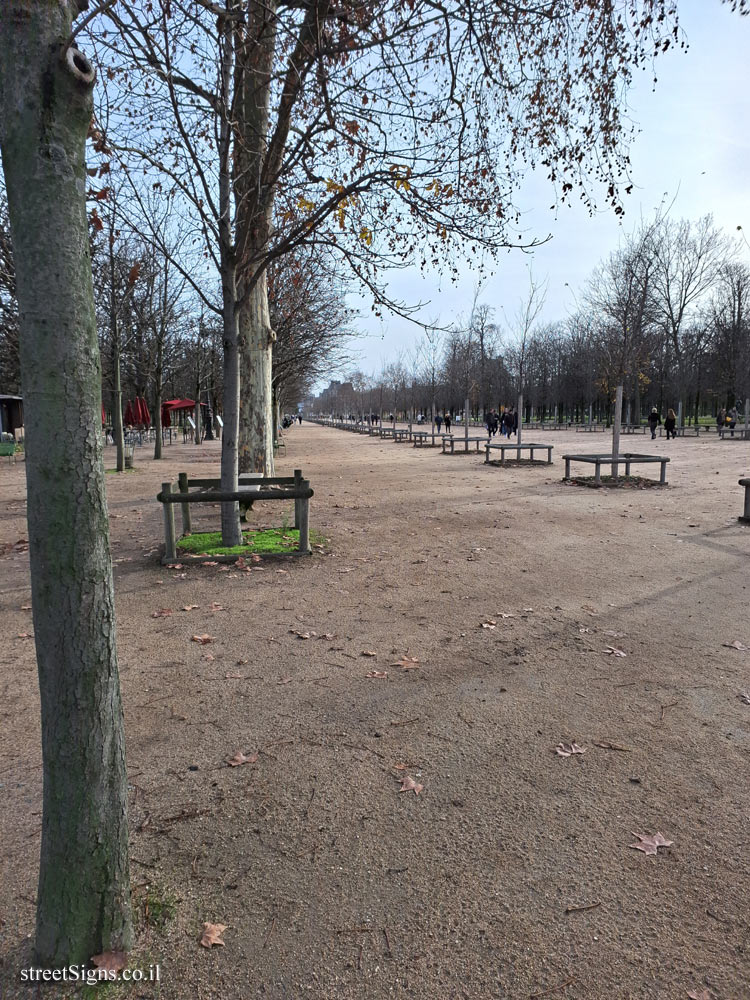The sign is one of those placed in the Tuileries Gardens, which provide directions to places in the garden. On the other side of the sign is usually information about the areas to which the sign points.
The places the sign refers to were photographed on the same day
The central passage
 Click for a larger image
Click for a larger image The octagonal basin
 Click for a larger image
Click for a larger image The other side of the sign
 Click for a larger image
Click for a larger image The map that appears at the bottom of the sign
 Click for a larger image Translation of the text on the sign
Click for a larger image Translation of the text on the sign:
Grand Couvert Central aisle / Information / Cafés - restaurants / Grand Carré / Round pool / Carrousela exit / Louvre Museum
Octagonal pool / Horseshoe / Jeu de Paume / Musée de l’Orangerie / Cafés - restaurants / Information / Toilets / (M) Concorde exit
[Map]
[The other side]
Central aisle and octagonal basin The wide central path forms the axis of the garden. It opens to the west towards the octagonal basin which is framed by the theatrical architecture designed by Le Nôtre.
These horseshoe ramps, connected to the terraces, open onto the long perspective of the Parisian axis. The statuary decoration which framed the Basin was put in place during the minority of Louis XV, around 1716-1720.
There we notice marbles made according to the antique under Louis XIV at the French Academy in Rome. On either side of the entrance, the equestrian groups of Mercury and Renommée on Pegasus were commissioned from Antoine Coysevox (1700-1702) for the Marly park (originals in the Louvre).

 Click for a larger image
Click for a larger image  Click for a larger image
Click for a larger image  Click for a larger image
Click for a larger image  Click for a larger image
Click for a larger image